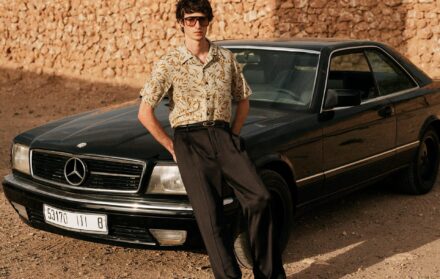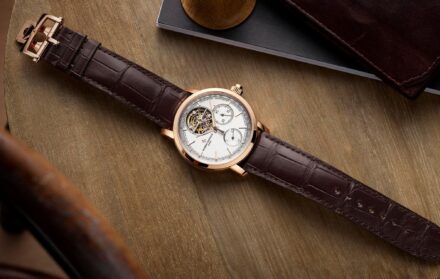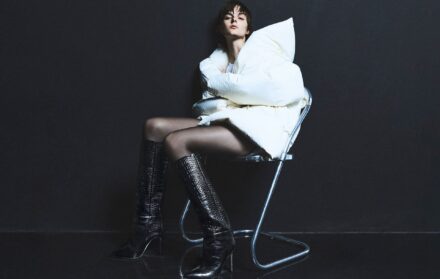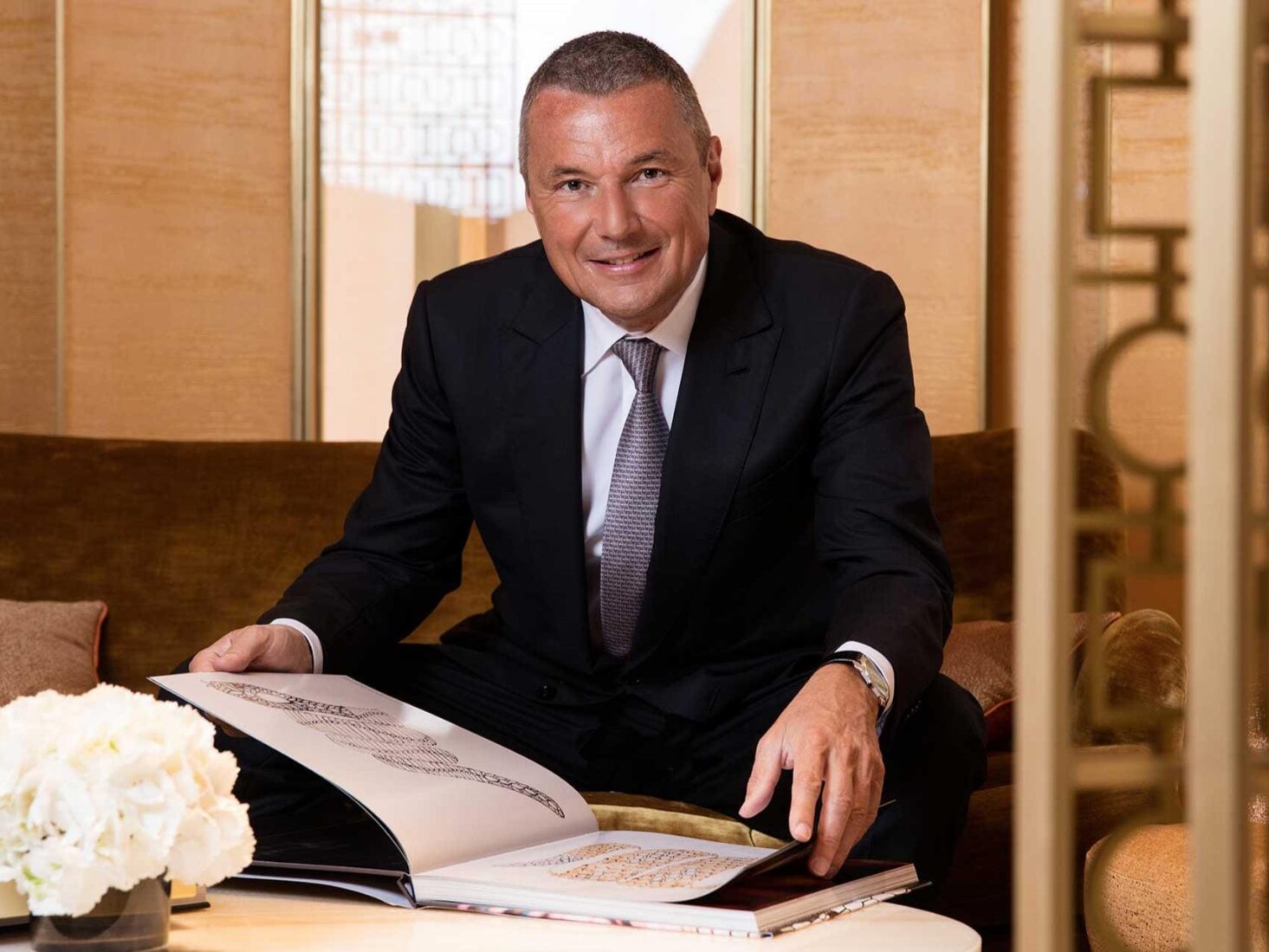
Big Time: Bulgari CEO Jean-Christophe Babin
“Bulgari would not have been successful without the Roman environment, the Roman warmth, the lifestyle of Roma”
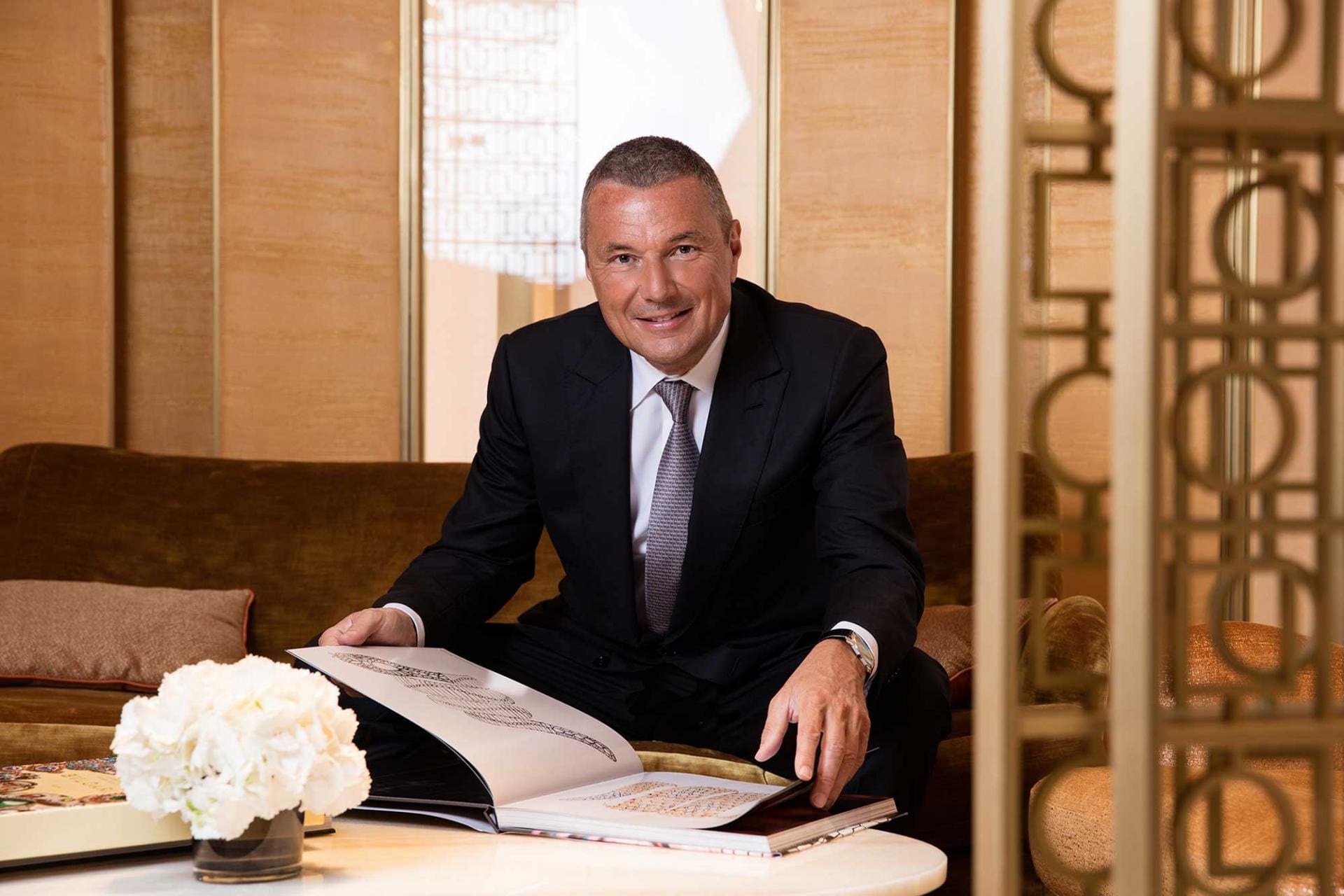
The £120,000 watch is ticking. It’s 7pm in Shanghai and in just over half-an-hour Bulgari CEO Jean-Christophe Babin is hosting the star-studded Shanghai International Film Festival Bulgari party. The celebration is a metaphorical champagne bottle about to be smashed against the gilded hull of the Italian jewellery brand’s new hotel.
The central Shanghai property, positioned at a discreetly exclusive distance from the other luxury hotels of the Bund and Pudong districts, might have been architecturally inspired by Babin. The CEO is tall and elegantly attired; his close-cropped silver-grey hair tones with the titanium skeleton of his Octo Finissimo Skeleton, which is placed between us on the table in his private suite – the watch’s intricate interior a helpful reminder of time, Bulgari’s evolution as a luxury jeweller, and the brand’s journey from a small boutique in Rome to a skyscraper in Shanghai.
The hotel itself – or ‘high hospitality’ as Babin politely corrects the term, in the same way that the maison’s other lines are called ‘high jewellery’, ‘high perfumery’, and ‘high watchmaking’ – is a gilded monolith with 360° views of Shanghai’s endless bristling skyline. The Bulgari Suite is the largest in the city – 400 square metres, which can be extended to 570 if connected with the adjoining suite. One night in its exquisitely marbled interior will set you back £19,000.
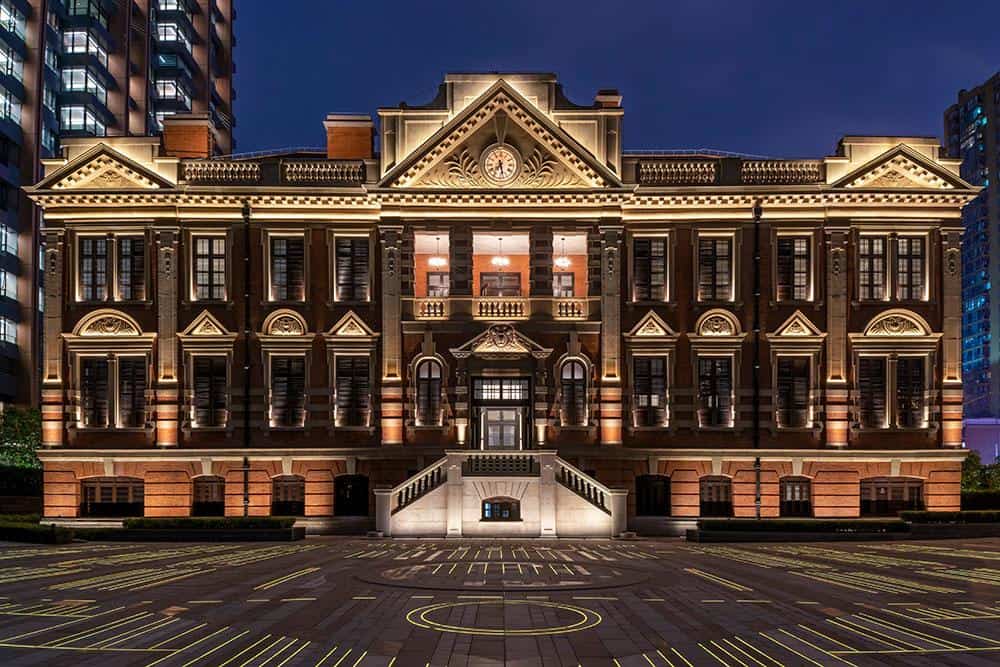
Designed by Italian architecture firm Antonio Citterio Patricia Viel – responsible for all six of the Bulgari high hospitality properties – the rooms are exemplars of understated, confident luxury, with milky Calacatta marble table tops offset by dark oak flooring. Breaking up the monochrome effect are the framed photographs of Bulgari jewellery on the wall, the decorations treading the line between art and advertisement.
“The hotel is the crowning Bulgari experience,” the French-Italian Babin explains. “We believe that Bulgari would not have been successful without the Roman environment, the Roman warmth, the lifestyle of Roma – whether that of antique Roman times or the more recent La Dolce Vita. The hotel is the culmination of the Roman experience by Bulgari.”
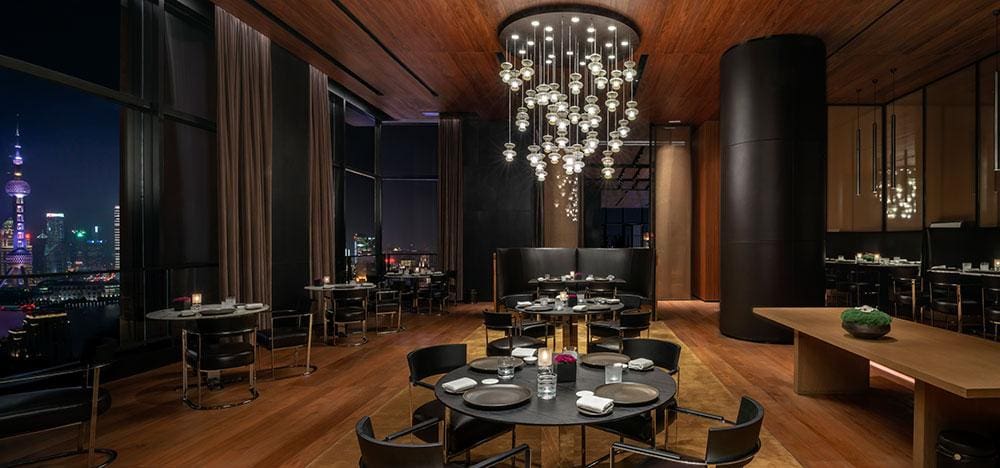
By Bulgari
That “Roman experience by Bulgari” has been nearly 135 years in the making, ever since Greek silversmith Sotirio Georgis Bulgari opened his first shop on Rome’s Via Sistina in 1884. Over that period, as Babin explains, the brand’s aesthetic changed as the place of jewellery within western culture also expanded.
“At the turn of the 20th century, you had one worldwide school of jewellery designed for extraordinary occasions – weddings and engagements, platinum and diamonds – and only for a small segment in the western world,” he says.
This trend continued up to the 1930s, during which time a renovation of the Bulgari flagship store saw the Latin ‘v’ included in the brand name for the first time. Restrictions on alloys during the Second World War contributed to Bulgari systematically combining yellow gold with gems. The brand also began to experiment with innovative cuts to its stones, eventually defining a style that is all, “volume and colour, reflecting the Roman environment”.
It was during the 1950s and 60s – the Dolce Vita years – that Bulgari began its hugely successful association with cinema (adorning the necks of actresses such as Elizabeth Taylor and Sophia Loren with its creations) firming up the sense of exclusive glamour that is now emblematic of the brand. More recent Bulgari fans include Naomi Watts and Jessica Chastain.
“Our jewellery continues to evolve,” Babin says, “as demonstrated by the La Festa collection that we disclosed last year. You’ll find in that collection a lot of threads with influences from the high jewellery of the 60s and the 80s; a constant evolution with innovations such as the balloon cut – a new shape of cabochon that we introduced with La Festa.”
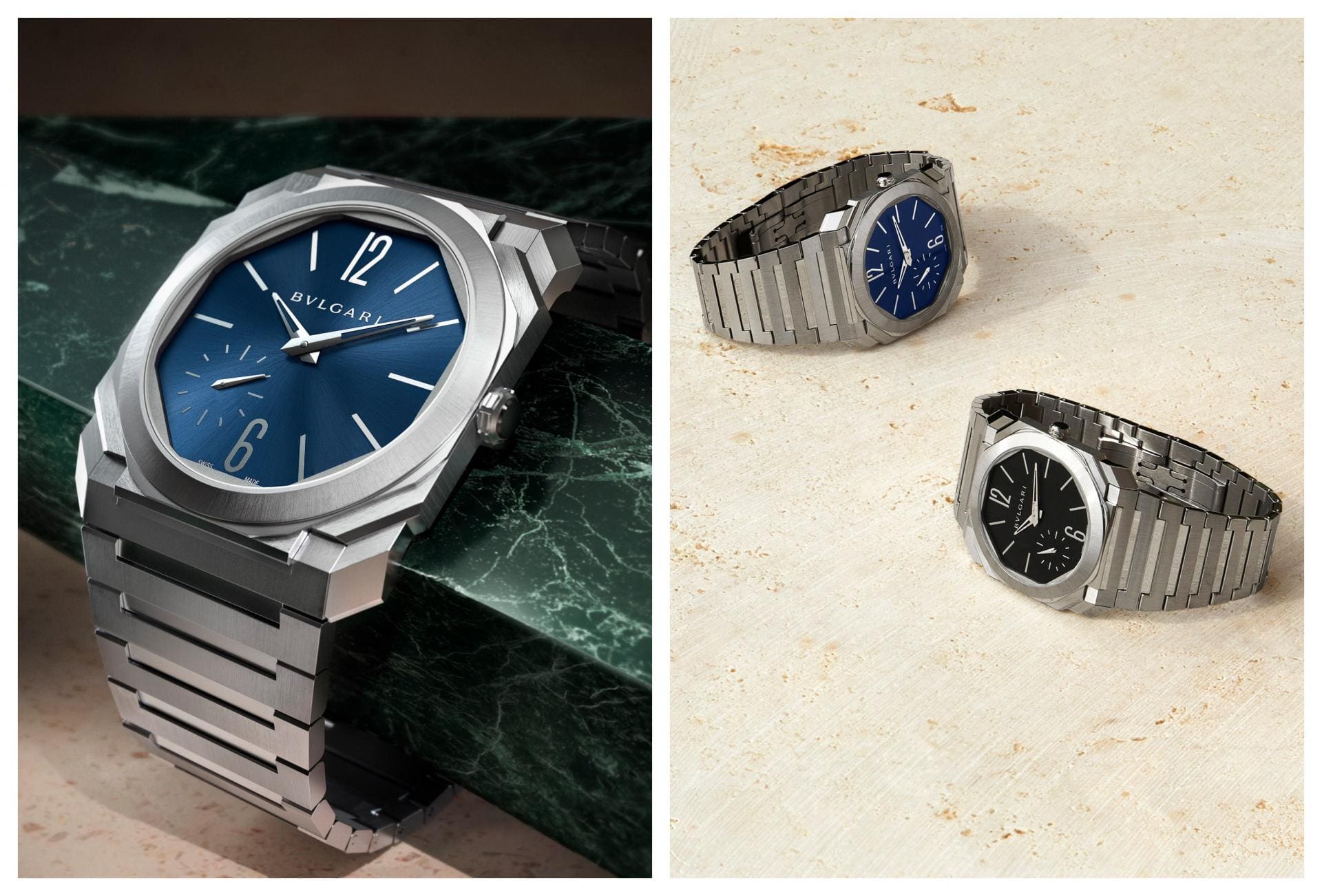
Modern Glamour
Of course, Bulgari has always understood that it’s as much about who is wearing its cabochons as it is about the jewellery itself. The maison’s latest choice of brand ambassador is Kitty Spencer, the niece of Princess Diana. She’s known for her resemblance to the ill-fated royal and the choice of the beautiful young influencer (459,000 Instagram followers at the time of writing) also co-opts the old school glamour attached to her semi-mythologised aunt.
“Kitty is one of those young, independent women who like to define their lives and shape their futures, who like to be uncommon,” Babin says. “She is emblematic of, broadly speaking, the equality of the sexes – which is something that, as a jeweller, we very much like to encourage. Primarily because women love us, and we know that they can be influential as to what their partners wear.”
As Babin makes this quip, former brand ambassador Elizabeth Burton springs to mind. The Cleopatra star brought Richard Burton, and other paramours, apparently, to get tastefully blinged out at the flagship Via Condotti boutique. That scenario might go a little differently in the internet age – if Lady Spencer was trying to suggest jewellery to a partner, she might first bring up Bulgari’s Instagram prior to popping down Via Condotti.
For Babin, technology is a boon. “I would define Instagram as back to roots – in that we started our journey in luxury with direct connections with clients. Mr Bulgari was a vendor and friend – he knew his first generation of customers personally… This lasted until the 1950s, when the advent of globalisation meant that the personal connection was lost. One century on, what Instagram and other social networks do is allow us to recreate a personal connection with our clients or potential clients – no longer on a scale that’s in the hundreds, but in the millions. It’s very important for a brand to evolve to be close to its clients.”

Closing the Circle
The perfect symbol of Bulgari’s evolution is the Serpenti line, conceived in the 1940s. Bulgari began making serpent-inspired pieces by employing an ancient Roman technique called Tubogas, which involves twisting twine to help shape jewellery. The line has been adapted to the fashions of each passing decade while retaining both its core style and popularity, and now incorporates watches, bags, and perfumes. So central is Serpenti to Bulgari, that the maison organised an exhibition in Rome in 2016 called SerpentiForm that traced how the symbol of the snake has been employed in art and jewellery throughout history.
“It’s an animal that has always been fascinating to human kind, in all cultures, representing rebirth and success,” Babin says. “Bulgari appropriated this symbol that had already come to Roma on the arm of Cleopatra 2,000 years previously. It best exemplifies Bulgari’s audaciousness – not everyone would wear a snake on the chest. It’s provocative, it’s seductive, it’s unique and rooted in each and every culture, so it’s global and local at the same time. The snake is Bulgari and Bulgari is the snake.”
Back in the room, it’s impossible to avoid the serpentine slinkiness of the ultra-thin Octo Finissimo Skeleton that continues tracking the time before me. Picking it up, the delicacy of the 3.95mm thick titanium watch is extraordinary, and the craftsmanship watches set a new record for thinness upon its release. It feels like a truly minimalist timepiece, shorn to its essentials, although as with its jewellery, Bulgari high watchmaking maintains a strong stylistic through line – on this watch, seen in the reproduction of a stylised motif of the Via Condotti boutique on the case-back. I wonder, with so many devices keeping track of time for us these days, whether actual time-keeping – bizarre as it may sound – is now a secondary concern in haute horology?
“Time is a commodity, you have it everywhere,” Babin replies. “Now it is not so much about the time a watch delivers, but how it delivers it. People are mesmerised by these hand-engineered micro-parts that give minutes, seconds, hours, that work like no other machine in the world… even the computer relaxes. This doesn’t relax for decades. The fascination is the craftsmanship, the balance of the design – each time you look at it you rediscover it.”
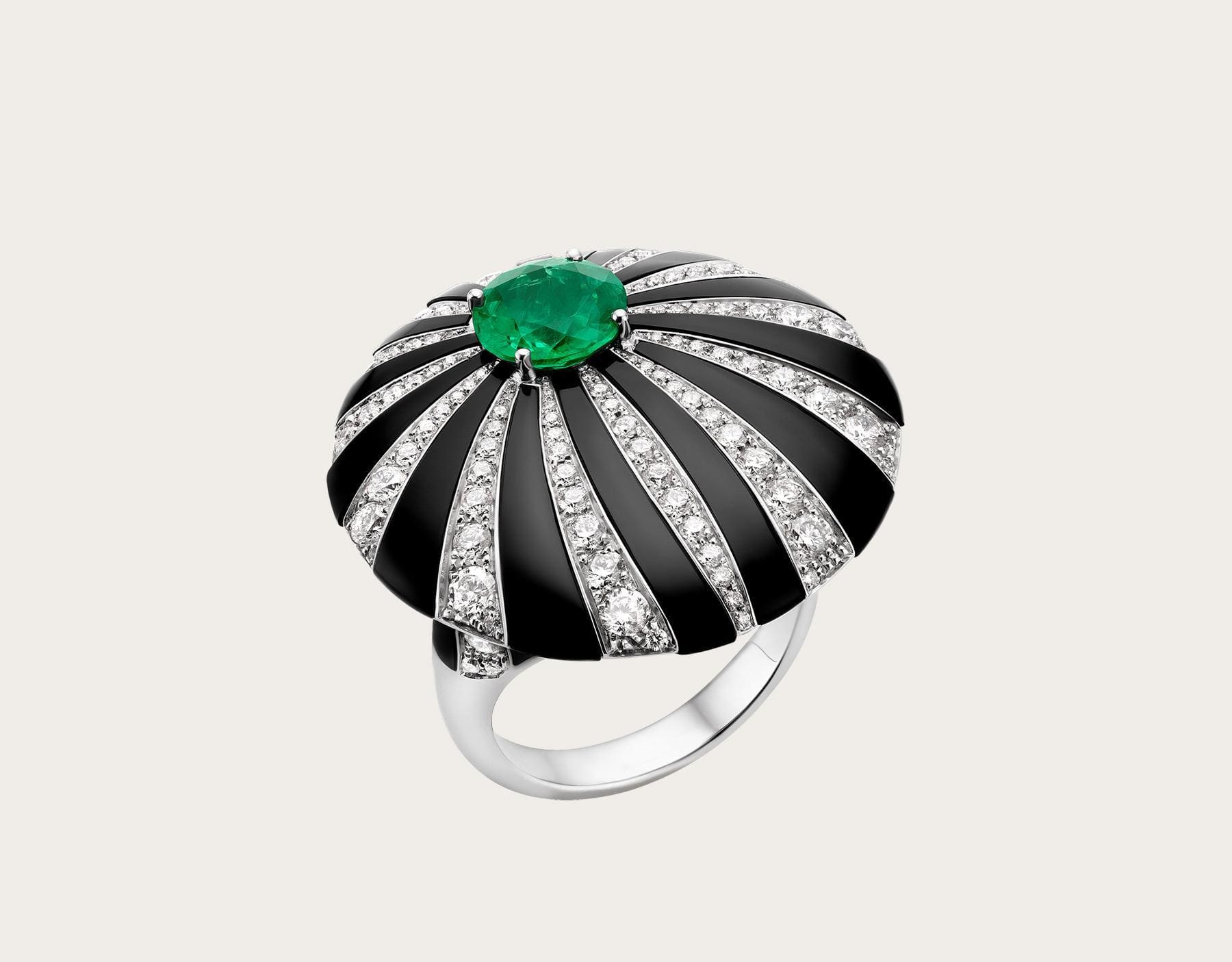
With time to the party counting down on the record-breaking timepiece, I ask what’s next for Bulgari? Babin cites plans to extend the “amazing necklace” of hotels from six to nine, with high hospitality landing in Moscow and Paris in 2020 and Tokyo in 2022.
He begins to wrap the watch back onto his wrist. “Obviously we shouldn’t forget we are jewellers – continue to innovate, be daring, to continue on that journey. Nature is providing us with these gems, and our art is to make those gems even more magnificent.”
The interview concludes, and Babin’s assistant shows me out into the plush twilight of the hotel corridor. Later, outside among the canapés and White Chic dress code carnival of the party, I see Babin in his tux, near the heart of where the stars of Chinese film are processing past tiers of paparazzi, making their way towards the Bulgari ballroom (located inside the tastefully renovated historic Shanghai Chamber of Commerce that is part of the hotel).
Watching the stars arrive, with the “volume and colour” of the Bulgari pieces vibrant around their slender necks, I’m put in mind of Babin’s comment about the continuing appeal of Italian style, and how “we all have dramas, but in Italian culture there is always this amused way of looking at life. Our culture looks at the positives rather than the negatives. This outlook increases the attractiveness of anything Roman or Italian, because people love that attitude to life, it is very aspirational, it makes life lighter, easier – without giving anything up.”
From £584 for a room, including breakfast, www.bulgarihotels.com/shanghai






